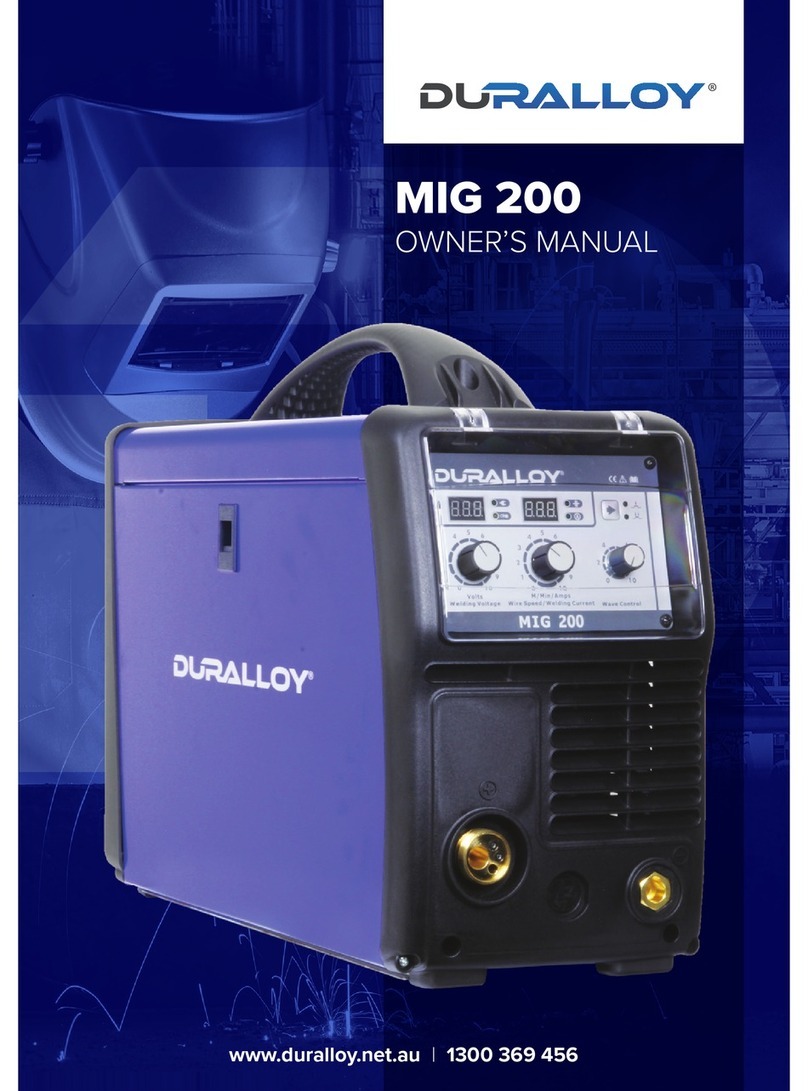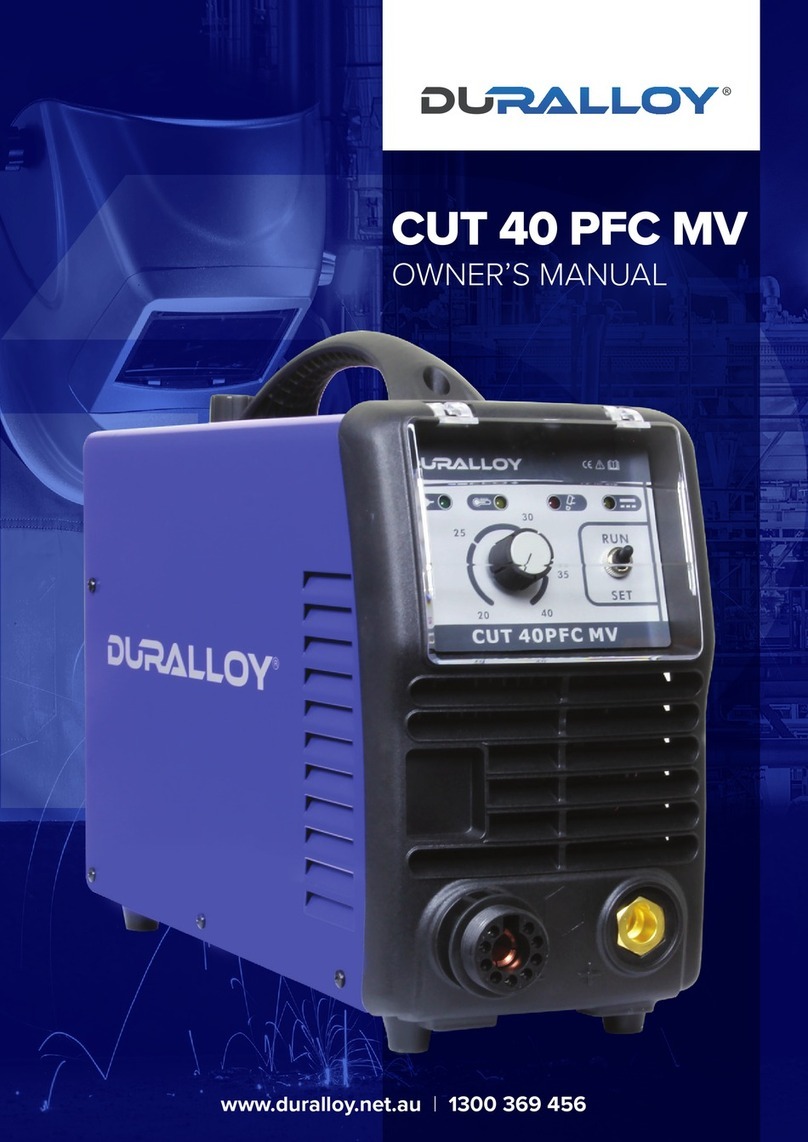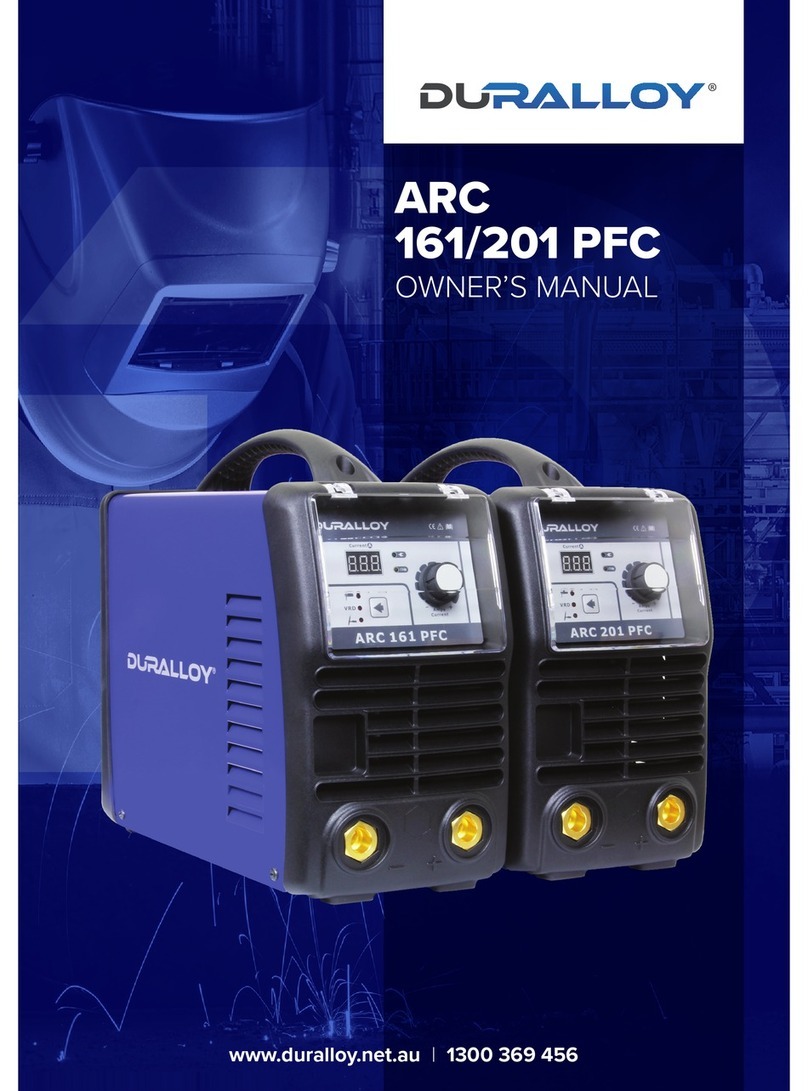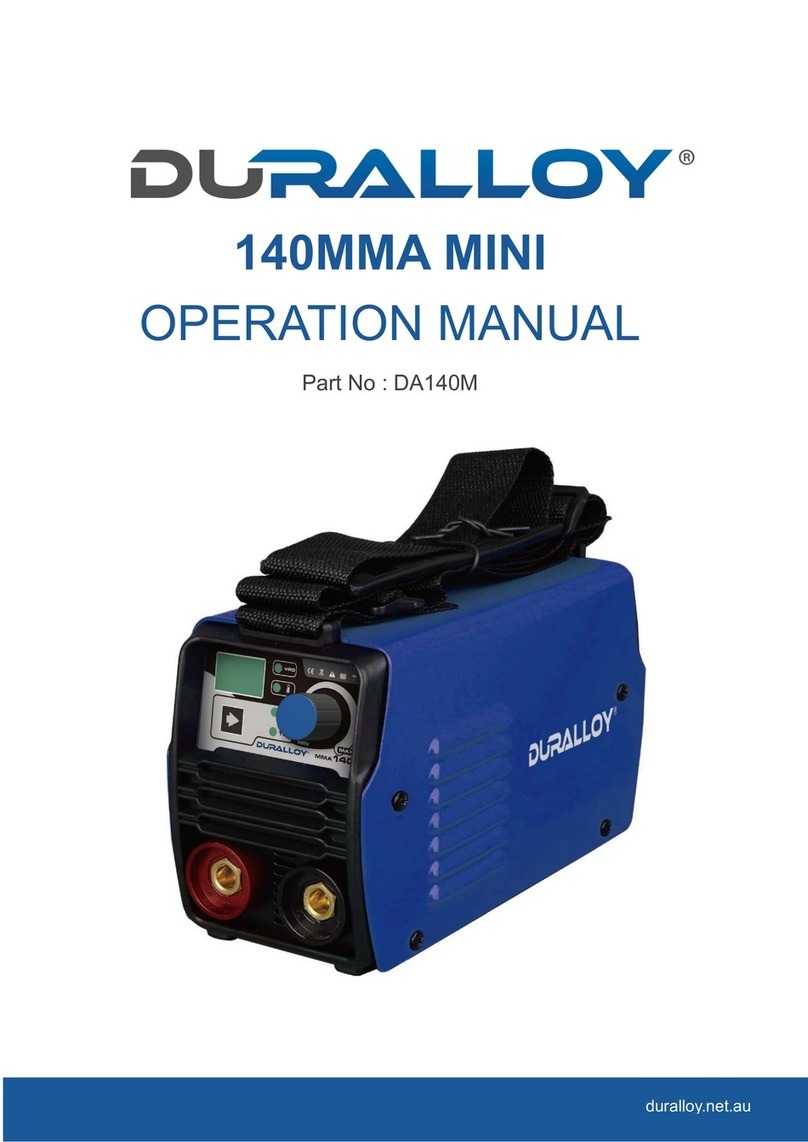
www.duralloy.net.au | 1300 369 456
6
171 & 191 MULTIMIG OWNER’S MANUAL
INSTALLATION
5.1. MIG WELDING SET UP & OPERATION
5.1.1 Fitting the spool
5.1.1.1 Open the cover door for the wire feed compartment.
Remove the wire spool retainer (23) by threading o anti
clockwise.
5.1.1.2 Fit the 200mm diameter wire spool to the spool holder,
ensuring the end of the wires exits towards the wire feeder
from the bottom of the spool. Refit the wire spool retainer (23)
and tighten finger tight.
5.1.1.3 Set the spool brake tension by rotating the adjustment
screw (24) using an Allen wrench. Clockwise to increase brake
tension, anti-clockwise to decrease brake tension. The spool
brake tension should be set so that the spool can rotate freely,
but does not continue to rotate once the wire feed stops. This
may need to be adjusted as the wire is used up and the spool
weight decreases.
5.1.2 Loading wire feeder
5.1.2.1 Release the wire
feeder tension arm (19)
by pivoting the wire feed
tension adjuster (18) as
pictured below
5.1.2.2 Check the wire
drive roller (21) groove
matches the selected MIG
wire type and size. The
drive roller will have two
dierent sized grooves,
the size of the groove in use is stamped on the side of the
drive roller. For flux cored ‘soft’ wire, such as that used in
gasless MIG welding, the drive roller groove has a serrated
profit. For solid ‘hard’ MIG wire, the roller groove has a ‘v’
shaped profile
5.1.2.3 The drive roller (21) is removed by threading the drive
roller retainer (22) o in the anti-clockwise direction. Once the
correct drive roller profile is selected, re-fit the drive roller.
5.1.2.4 Thread the MIG wire from the spool through the input
guide tube (20), through the roller groove and into the outlet
guide tube
5.1.2.5 Replace the tension arm (19) and the tension adjustment
(18). Double check the wire has located correctly in the drive
roller groove.
5.1.2.6 Adjusting wire feed tension: this is accomplished by
winding the knob on the wire tension adjustment arm (18).
Clockwise will increase tension, anti-clockwise will decrease
tension. There is a numbered scale on the tensioner to
indicate the position. Ideal tension should be as little as
possible, while maintaining a consistent wire feed with no
drive roller slippage. Check all other possible causes of
slippage, such as; incorrect/ worn drive roller, worn/ damaged
torch consumables, blocked/ damaged torch feed liner, before
increasing feed tension.
Warning! - Before changing the feed roller or wire spool,
ensure that the mains power is switched o
Warning! - The use of excessive feed tension will cause
rapid and premature wear of the drive roller, the support
bearing and the drive motor.
5.1.3 Setup for gasless MIG welding operation
5.1.3.1 Connect the MIG Torch Euro Connector (26) to the
torch socket on the front of the welder (11). Secure by firmly
hand tightening the threaded collar on the MIG Torch Euro
Connector clockwise.
5.1.3.2 Check that the correct flux cored, gasless wire,
matching drive roller (21) and welding tip (30) are fitted
5.1.3.3 Connect Torch
Connection Power Lead
(14) to the negative (-)
welding output terminal
(13).
5.1.3.4 Connect Earth Lead
Quick Connector (28) to
the positive (+) output
welding terminal (12). See
picture below.
5.1.3.5 Connect Earth Clamp (27) to the work piece. Contact
with workpiece must be strong contact with clean, bare metal,
with no corrosion, paint or scale at the contact point.
5.1.4 Setup for gas shielded MIG welding operation
Note - Gas shielded MIG welding requires a shielding gas
supply, gas regulator and gas shielded MIG wire.
5.1.4.1 Connect the MIG Torch Euro Connector (26) to the
torch socket on the front
of the welder (11). Secure
by firmly hand tightening
the threaded collar on the
MIG Torch Euro Connector
clockwise.
5.1.4.2 Check that the
correct gas shielded wire,
matching drive roller (21)
and welding tip (30) are
fitted
MIG
TORCH
EARTH
LEAD
MIG
TORCH
EARTH
LEAD


































